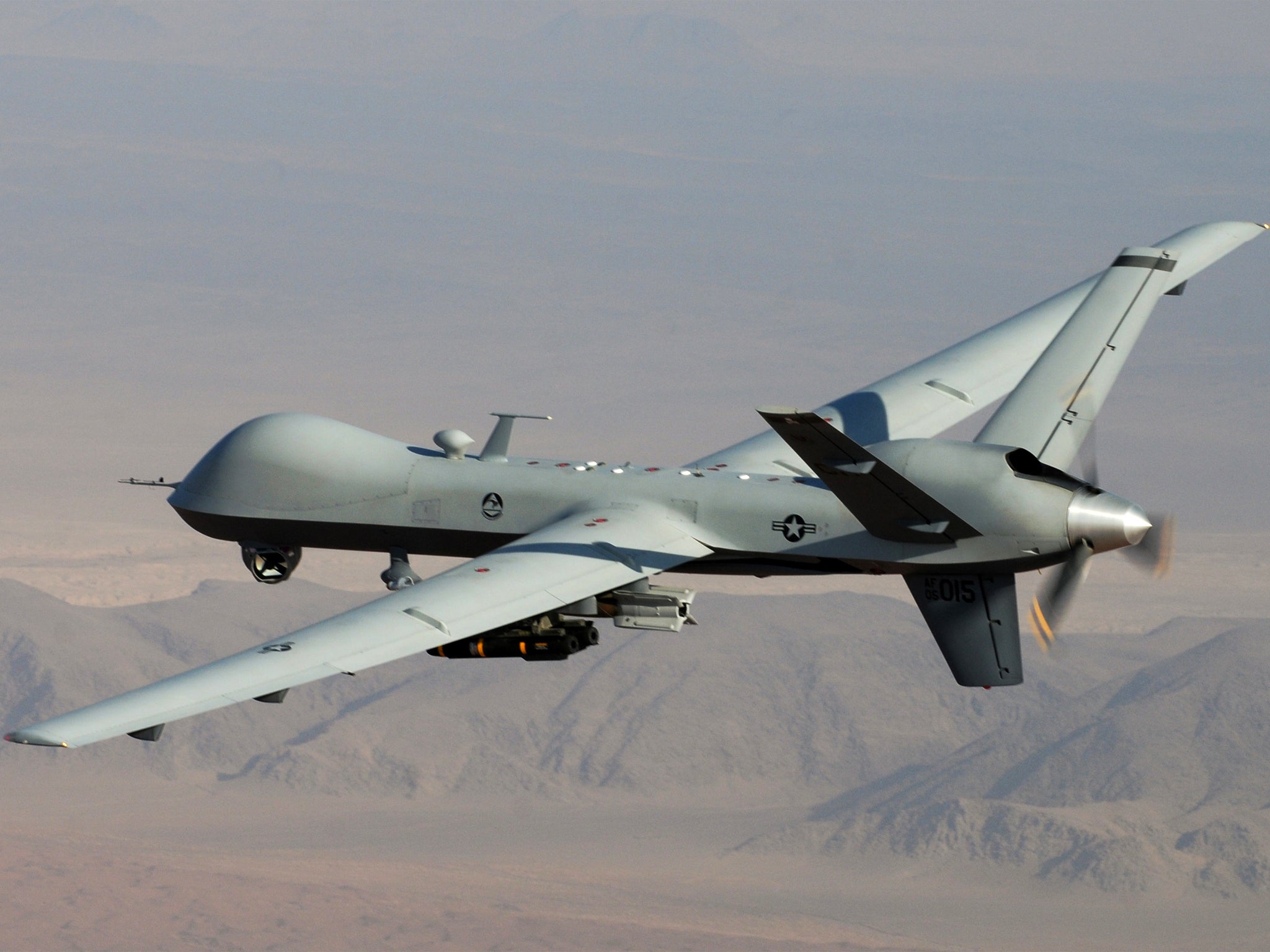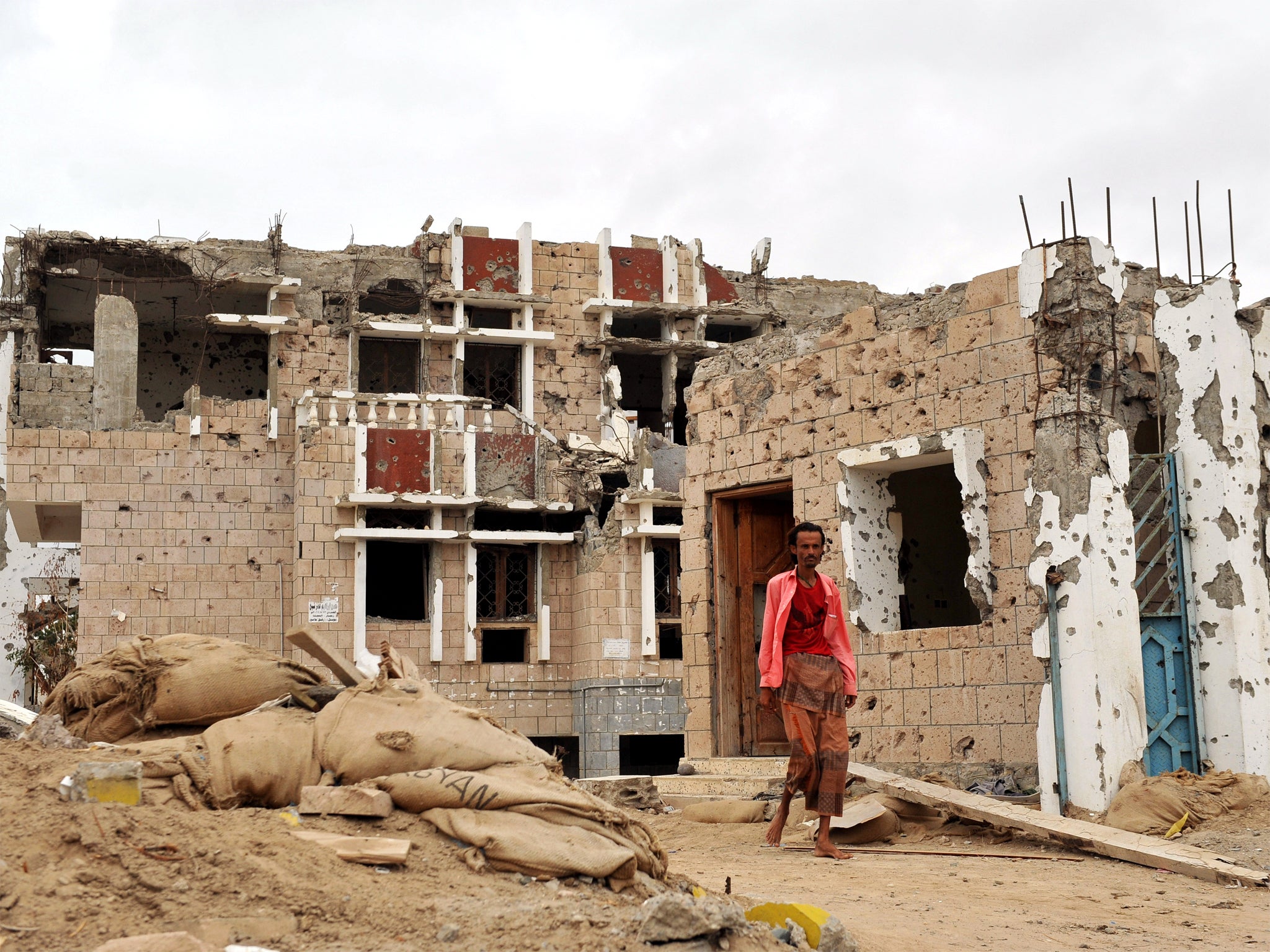Secret files lift lid on al-Qa’ida fightback against US drones
American Intelligence warns jihadists are recruiting engineers to examine vulnerabilities in unmanned aircraft

Your support helps us to tell the story
From reproductive rights to climate change to Big Tech, The Independent is on the ground when the story is developing. Whether it's investigating the financials of Elon Musk's pro-Trump PAC or producing our latest documentary, 'The A Word', which shines a light on the American women fighting for reproductive rights, we know how important it is to parse out the facts from the messaging.
At such a critical moment in US history, we need reporters on the ground. Your donation allows us to keep sending journalists to speak to both sides of the story.
The Independent is trusted by Americans across the entire political spectrum. And unlike many other quality news outlets, we choose not to lock Americans out of our reporting and analysis with paywalls. We believe quality journalism should be available to everyone, paid for by those who can afford it.
Your support makes all the difference.Al-Qai’da’s leadership has assigned cells of engineers the task of finding ways to shoot down, jam or remotely hijack US drones, hoping to exploit the technological vulnerabilities of a weapons system that has inflicted huge losses upon the terrorist network, according to top-secret US intelligence documents.
Although there is no evidence that al-Qa’ida has forced a drone crash or interfered with flight operations, US intelligence officials have closely tracked the group’s persistent efforts to develop a counter-drone strategy since 2010, the documents show.
Al-Qa’ida commanders are hoping a technological breakthrough can curb the US drone campaign, which has killed an estimated 3,000 people over the past decade. The strikes have forced al-Qa’ida operatives and other militants to take extreme measures to limit their movements in Pakistan, Afghanistan, Yemen, Somalia and other places. But the drone attacks have also taken a heavy toll on civilians, generating a bitter popular backlash against US policies toward those countries.
Details of al-Qa’ida’s attempts to fight back against the drone campaign are contained in a classified intelligence report provided to The Washington Post by Edward Snowden, the fugitive former National Security Agency contractor. The top-secret report, titled Threats to Unmanned Aerial Vehicles, is a summary of dozens of intelligence assessments posted by US spy agencies since 2006.
Under President Barack Obama and his predecessor, George W Bush, drones have revolutionised warfare and become a pillar of the US government’s counter-terrorism strategy, enabling the CIA and the military to track down enemies in some of the remotest parts of the planet. Drone strikes have left al-Qa’ida’s core leadership in Pakistan struggling to survive.
US spy agencies have concluded that al-Qa’ida faces “substantial” challenges in devising an effective way to attack drones, according to the report. Still, US officials and aviation experts acknowledge that unmanned aircraft have a weak spot: the satellite links and remote controls that enable pilots to fly them from thousands of miles away.
In July 2010, a US spy agency intercepted electronic communications indicating that senior al-Qa’ida leaders had distributed a “strategy guide” advising on how “to anticipate and defeat” unmanned aircraft. The Defence Intelligence Agency (DIA) reported that al-Qa’ida was sponsoring simultaneous research projects to develop jammers to interfere with GPS signals and infrared tags that drone operators rely on to pinpoint missile targets.
Other projects in the works included the development of observation balloons and small radio-controlled aircraft which insurgents apparently saw as having potential for monitoring the flight patterns of US drones.
Al-Qa’ida cell leaders in the tribal areas of north-western Pakistan were “determining the practical application of technologies being developed for battlefield applications”, analysts from the DIA wrote.
The analysts added that they believed al-Qa’ida “cell leadership is tracking the progress of each project and can redirect components from one project to another”.

The technological vulnerabilities of drones are no secret. The US Air Force Scientific Advisory Board issued an unclassified report two years ago warning that “increasingly capable adversaries” in countries such as Afghanistan could threaten drone operations by inventing inexpensive counter-measures.
The board said insurgents might try to use “lasers and dazzlers” to render a drone ineffective by blinding its cameras and sensors. It also predicted the use of rudimentary acoustic receivers to detect drones and “simple jammer techniques” to interfere with navigation and communications.
In 2010, the CIA noted in a secret report that al-Qa’ida was placing special emphasis on the recruitment of technicians and that “the skills most in demand” included expertise in drones and missile technology.
Al-Qa’ida leaders have become increasingly open about their anti-drone efforts. In March, a new English-language online jihadist magazine called Azan published a story titled “The drone chain”. The article derided drones as “evil missiles designed by the devils of the world” but reassured readers that jihadists had been working on “various technologies” to hack, manipulate and destroy them.
In the absence of a hi-tech silver bullet, al-Qa’ida affiliates around the world have taken to sharing hard-earned lessons about the importance of basic defensive measures.
Islamist extremists in North Africa this year distributed a photocopied tip-sheet with 22 recommendations. Among the suggestions are ideas for camouflage as well as dubious advice on using radio or microwave transmitters to “confuse the frequencies used to control the drone”.
US spy agencies also worried about public opposition. Analysts questioned whether they were losing the rhetorical battle in the media, the courts and even among “citizens with legitimate social agendas”. One 2010 report predicted that drone operations “could be brought under increased scrutiny, perceived to be illegitimate, openly resisted or undermined”.
In Numbers
3,584 Estimated number killed by the US drone campaign in the past decade
355 Drone strikes on Pakistan since 2004
400 Civilians killed by drones in Pakistan
Join our commenting forum
Join thought-provoking conversations, follow other Independent readers and see their replies
Comments